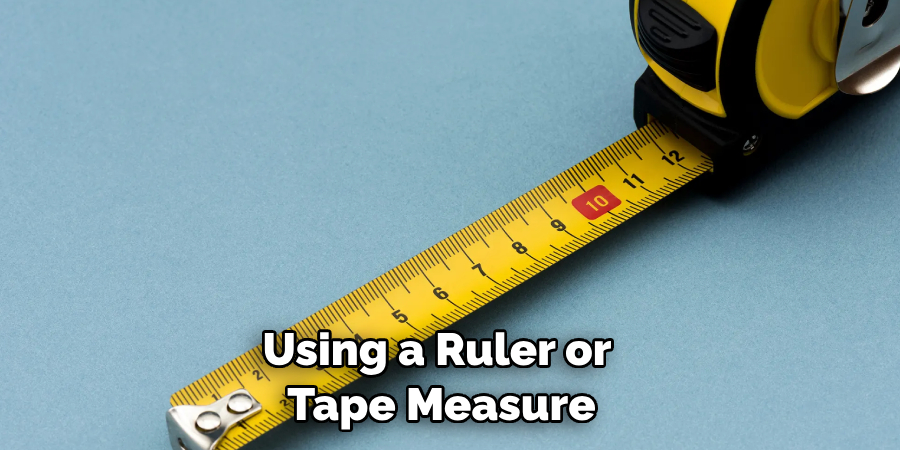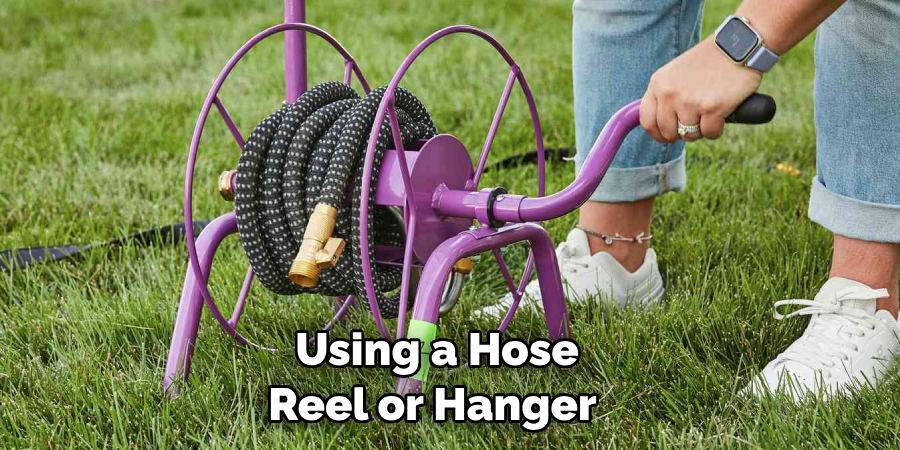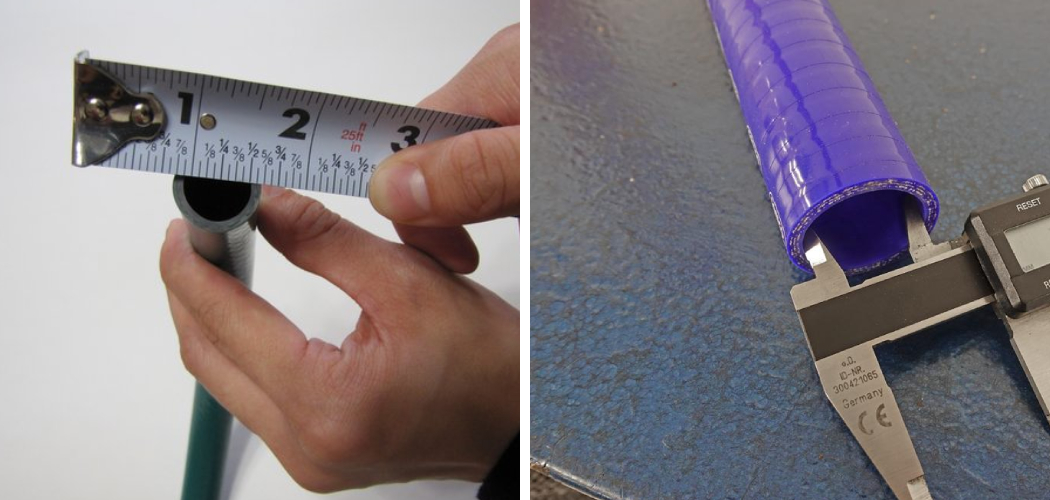To measure the diameter of a garden hose, use a measuring tape or ruler. Place one end of the measuring device at the opening of the hose and measure across the center of the hose to the other side.
This will give you the diameter of your garden hose accurately. Welcome to the world of gardening! Whether you are a beginner or an experienced gardener, one of the first things you need to know is how to measure the diameter of your garden hose.
This information is essential for various gardening tasks, such as choosing the right attachments or fittings for your hose. While it may seem simple, accurately measuring the diameter is crucial to ensure compatibility and proper water flow. In this article, we will guide you through the simple process of measuring your garden hose diameter, using common tools you may already have on hand. So, let’s dive right in!

Why Garden Hose Diameter Matters
Garden hose diameter is an important factor when it comes to measuring water flow. By understanding the importance of measuring garden hose diameter, you can ensure optimal water flow in your garden. The diameter of the hose directly affects how much water can pass through it.
A smaller diameter means less water flow, while a larger diameter allows for greater water flow. It is crucial to measure the hose diameter accurately to ensure you are using the right size hose for your needs. By having the correct hose diameter, you can maximize the efficiency of watering your plants and avoid any potential issues with water pressure.
So, take the time to measure your garden hose diameter and make sure it aligns with your watering requirements.
Tools Needed For Measuring Garden Hose Diameter
To accurately measure the diameter of a garden hose, it is crucial to have the right tools. Using inappropriate tools may lead to inaccurate results. Here is a list of the tools you will need for precise measurements: a tape measure or ruler, a caliper, and a hose fitting gauge.
Each tool serves a specific purpose in determining the diameter of the hose. The tape measure or ruler allows you to measure the circumference and calculate the diameter using a simple formula. The caliper provides precise and direct measurements of the hose diameter.
Lastly, the hose fitting gauge ensures an accurate fit for attachments and accessories. It is important to use these tools to ensure the correct hose diameter and prevent any fitting or pressure issues. By using the correct tools, you can ensure accurate measurements and maintain the efficiency of your garden hose.
Step-By-Step Guide On How To Measure Garden Hose Diameter
To measure the diameter of your garden hose, there are a few simple steps to follow. First, make sure the hose is clean and dry. Next, straighten it out completely to get an accurate measurement. You have a few options for measuring tools, such as a measuring tape, caliper, or hose gauge.
Use whichever method is most convenient for you. Once you have the tool in hand, carefully measure the diameter of the hose at its widest point. Take note of the measurement and record it for future reference. Keeping records of your measurements can be beneficial when it comes to purchasing fittings or accessories for your garden hose.
By following these easy steps, you can confidently determine the diameter of your garden hose without any hassle.
Common Mistakes To Avoid When Measuring Garden Hose Diameter
Measuring the diameter of your garden hose accurately is essential for ensuring proper fittings and connections. However, many gardeners make common mistakes that result in inaccurate measurements. One such mistake is not using the correct measuring tool for your hose diameter.

Using a ruler or tape measure instead of a caliper can lead to errors. Another error to avoid is not straightening out the hose before measuring. A coiled or kinked hose can give you false measurements. Additionally, not measuring the inside diameter of the hose can lead to incorrect fittings.
Moreover, not considering the thickness of the hose wall can also affect accurate measurements. To obtain precise results, always use a caliper, straighten out the hose, measure the inside diameter, and account for the thickness of the hose wall. By avoiding these common pitfalls, you can ensure that your garden hose fits properly and functions effectively.
Understanding Different Garden Hose Sizes And Their Uses
Understanding the different sizes of garden hoses and their uses is crucial for measuring hose diameter. You can choose from various hose sizes available in the market, each serving a specific purpose. Matching the right hose size with your intended use ensures efficient water flow and pressure.
Whether you need a small diameter hose for light gardening or a larger one for heavy-duty watering tasks, it’s important to know the options available. By considering factors such as the length of the hose, the intended application, and the water pressure needed, you can easily determine the right garden hose diameter for your needs.
So, before purchasing a garden hose, make sure to evaluate the various sizes to find the perfect fit for your gardening requirements.
Tips For Maintaining Optimal Garden Hose Diameter
Proper care and storage of garden hoses are critical in preventing damages and preserving the hose diameter. Regularly inspect your hose for any signs of wear or leaks and promptly repair them. After each use, drain the hose completely and avoid leaving it exposed to direct sunlight or extreme temperatures.

Store the hose in a cool, dry place, preferably coiled neatly to prevent kinks and tangles. Avoid dragging the hose across rough surfaces or sharp objects, as this can cause abrasions or punctures. Additionally, using a hose reel or hanger can help maintain the optimal diameter and prevent unnecessary strain on the hose.
By following these simple tips, you can ensure that your garden hose remains in good condition and continues to provide reliable performance for all your watering needs.
Frequently Asked Questions Of How To Measure Garden Hose Diameter
How Do I Measure The Diameter Of My Garden Hose?
To measure the diameter of your garden hose, use a measuring tape and measure the width of the hose opening. Alternatively, you can use a caliper tool to measure the width of the hose. Make sure to measure at the widest part of the opening for accurate results.
Can I Determine The Hose Diameter Without Measuring?
Yes, if you have the packaging or any documentation that came with your hose, it usually specifies the diameter. Additionally, you can check for any imprinted markings on the hose itself, as manufacturers often include the diameter measurement for easy identification.
What Are The Common Garden Hose Diameters?
The most common garden hose diameters are 1/2 inch, 5/8 inch, and 3/4 inch. These sizes are widely available and compatible with most attachments and watering devices. It’s important to know your garden hose diameter to ensure proper fitting and functionality.
How Do I Choose The Right Diameter For My Garden Hose?
To choose the right diameter for your garden hose, consider the water flow you need for your gardening tasks. If you have a small garden or low water requirements, a 1/2 inch hose should suffice. However, larger gardens or higher water flow needs may benefit from a 5/8 or 3/4 inch hose.
Can I Connect Different Diameter Hoses Together?
Yes, you can connect hoses of different diameters together using a hose connector or adapter. Ensure that the connector matches the larger diameter hose, allowing you to connect the smaller diameter hose to it securely. This provides flexibility and adaptability in managing your garden hose system.
Conclusion
To accurately measure the diameter of your garden hose, follow these simple steps. First, locate the measuring tape, making sure it’s long enough to span the length of the hose. Then, wrap the tape around the hose, ensuring it’s taut but not stretched.
Take note of the measurement and record it for future reference. Now that you know the diameter of your garden hose, you can confidently choose the right fittings and accessories to ensure a proper fit. Remember, using the correct hose diameter will optimize water flow and guarantee efficient performance for your gardening needs.
So, with this knowledge in hand, you can confidently embark on your gardening projects, knowing that you will have the right equipment to get the job done.

